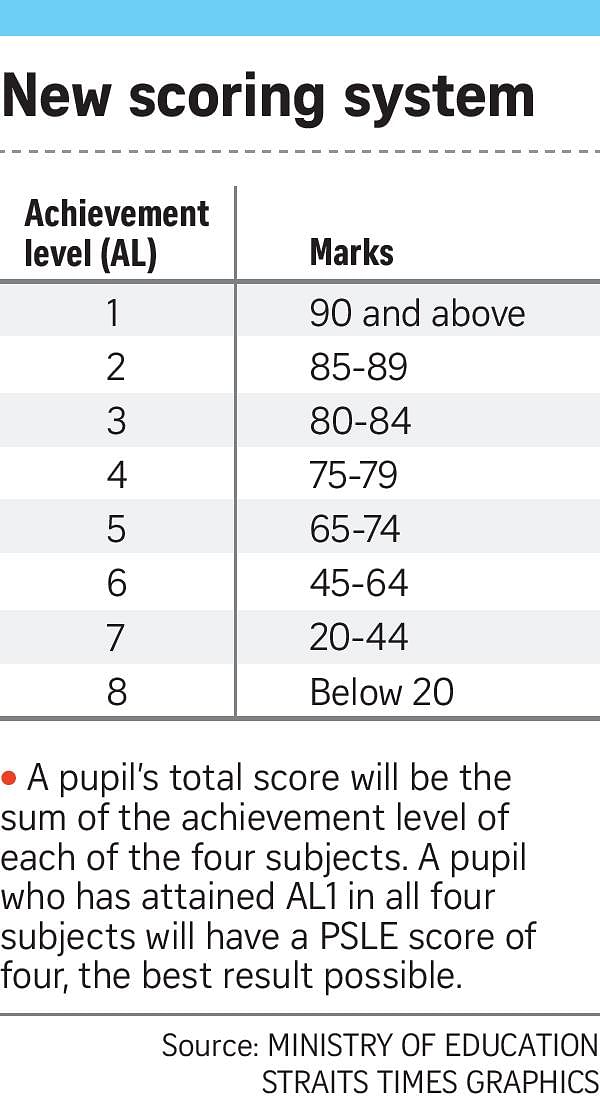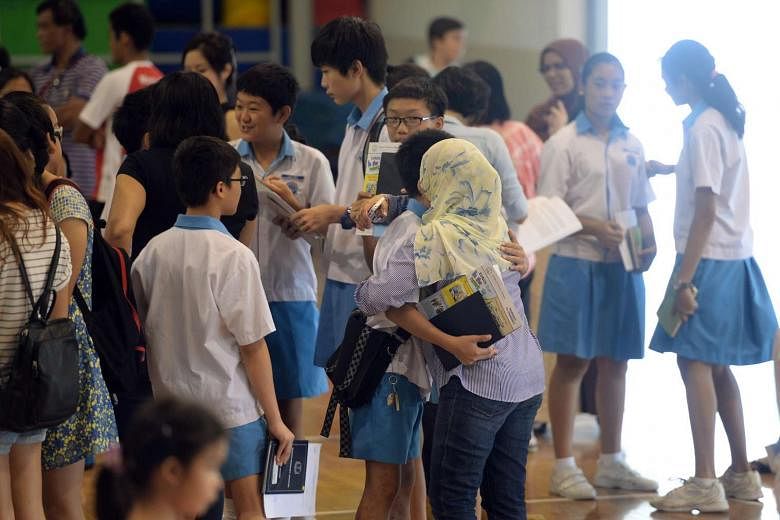From 2021, the current PSLE T-score system will be replaced by eight wider grade bands. The revamp is intended to reduce the over-emphasis that parents and pupils currently place on academic achievement and to shift emphasis towards a child's holistic development.
The question is whether the scoring changes will have the intended effects. Views seem divided. While many feel that competition will be blunted, there are also some who feel that stress and competition could instead be heightened. Who is correct?
Let's see how both scoring systems work. Under a T-score system, a child's eventual score in a certain PSLE subject is computed (roughly) by first subtracting the average score received by everyone in the child's cohort from that child's score, before dividing this number by the standard deviation of the test scores.
This means that the eventual score received by a child is measured relative to the average received by his peers. Even if a child achieves a raw score of 80/100, he could still receive a low T-score if everyone in his cohort performs well (say, if the average score is 90).
In contrast, the new scoring system pre-specifies the range of marks making up each grade band. If a child attains a raw score of 80/100, he will, with no doubt, receive the grade of AL3 in the new system, even if his peers do remarkably well.
I like to think of the new scoring system as comprising two separate changes. Firstly, it moves from a system where a child's ability is ranked against his peers to one where a child's performance is absolute. This part of the change should unambiguously lead to lower competition since one child's success now does not have to mean another child's failure.

But there is a second change as well: blunting of scores through banding. And it is people's responses to this second component that will determine if incentives to compete will be blunted or sharpened.
How are parents of the highest achievers - those normally scoring 90s and above in their everyday tests - likely to respond? Well, competition is likely to be reduced for this group.
Under the T-score system, parents might pressure a child normally scoring 95 to aim for a score of 100 to put him ahead of others - by, say, sending him for enrichment classes,
The urgency to do the same now would be reduced since whether he attains a 95 or a 100, he would still receive an AL1 grade.
However, the parents of a child who usually scores around 60 for his tests would respond very differently. Under the old system, this child would be considered way ahead of another child who scores 45. But under the new system, both children would essentially receive the same grade - AL6.
So under the new system, children with "average abilities" - that is, those typically scoring 60s for their everyday tests - would face pressure from their parents to do better, so that they can avoid being "mixed with" those scoring in the 40s or 50s.
The analysis above assumes parents know their child's performance - whether the child is typically a 90s or a 60s scorer.
In practice, imperfect information and risk aversion could actually lead parents of even high achievers to be more competitive. Why? Because although they may know that their child usually scores in the 90s range in that school, there remains uncertainty as to how the child will perform on a national level.
"What if the standards of the national exam are much higher than those set by my child's school?" they might worry. Such concerns might be reinforced if a child's performance tends to vary - so he sometimes scores in the 90s, but other times only in the 80s. Risk-averse parents might therefore send their already bright children for extra enrichment classes just to be sure.
Ultimately, how parents will respond to the new scoring system will depend on three factors: Where they view their child on the academic distribution; how averse they are to risks; and how variable is the child's past performance.
The more risk-averse they are and the more variable their child's performance, the more likely the new system will push them to compete more fiercely. In other words, we cannot expect the new system to reduce competition for everyone, and neither can we expect it to increase competition for everyone. Depending on the three factors, some will face more incentive to be competitive and some will face less.
It is possible to predict whether the new system will be successful in its objectives. One way would be to conduct an experiment where we randomly assign a sample of pupils into two groups at the beginning of the year. In one group, pupils take tests under a scoring scheme akin to the T-score.
In the other, pupils take tests based on a scheme akin to the new system. Pupils are told at the beginning of the year how they will be scored.
At the end of the year, pupils are then asked how much time they spent in a typical week studying and whether they attended any tuition lessons over the course of the year.
If tuition rates and study times are significantly lower for those in the second group, then we know that, on average, the scheme is likely to produce its intended effects.
You might wonder whether differences in study times or rates of tuition between both groups may be confounded by differences in their characteristics. Well, they won't.
Randomisation will ensure that the composition of pupils in both groups are similar so that any differences must be attributable solely to the way they are scored. We could go further, by splitting pupils based on academic profile to analyse the likely effects on pupils of different ability levels.
Barring such an experiment, only time will tell how pupils and parents will actually respond to the change.
•The writer is a lecturer in the Department of Economics, National University of Singapore. His research focuses on the economics of education.

